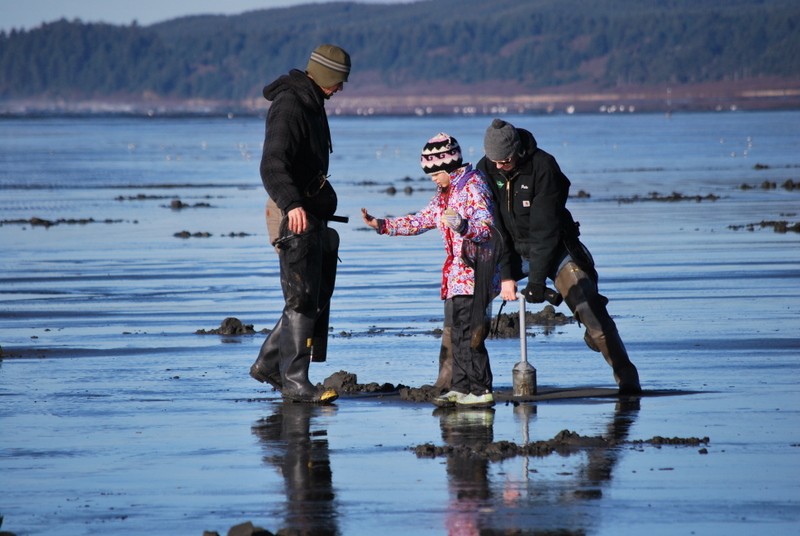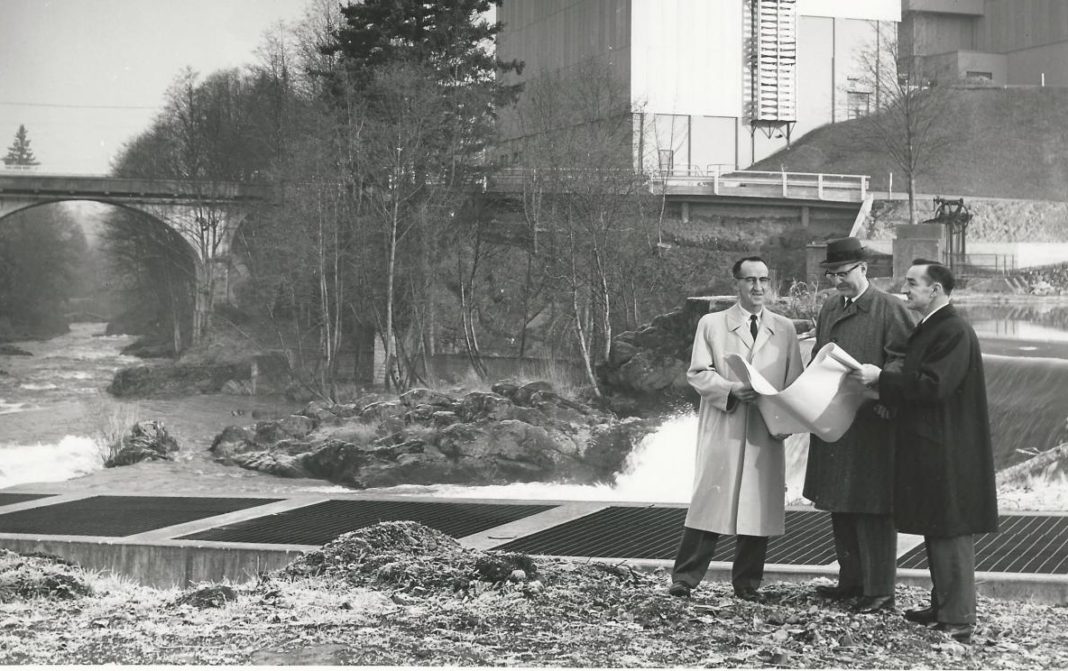The most enduring legacy from the 1962 Seattle World’s Fair can be found at the Seattle Center, with its Space Needle dominating the city’s skyline and defining its worldwide image.
 But 60 miles south, Tumwater Falls Park, with its picturesque waterfall, historic roots and half-mile trail along the Deschutes River, also claims its place among the many lasting monuments to that six-month gathering 55 years ago.
But 60 miles south, Tumwater Falls Park, with its picturesque waterfall, historic roots and half-mile trail along the Deschutes River, also claims its place among the many lasting monuments to that six-month gathering 55 years ago.
Just as Seattle and surrounding areas use Seattle Center as a place to play, Tumwater Falls Park has become a place for the local community and visitors to enjoy the natural beauty of the area.
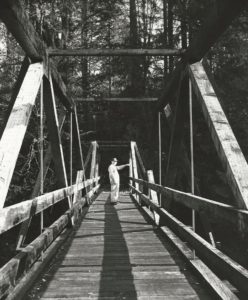
“It’s the heart and soul of Tumwater, like an oasis in the middle of the city – a sanctuary” says Don Trosper, public history manager for the Olympia Tumwater Foundation, which built and maintains the park.
Even with Interstate-5 bordering the park on one side and busy Capitol Boulevard on the other, the sound of flowing water draws people to the natural serenity of the park, muffling the din of modern life, says John Freedman, executive director of the park. “We want to preserve the natural beauty.”
The roots of this modern incarnation of “Deschutes canyon” began at a board meeting of the Foundation in December 1961, four months before the fair opened.
The foundation was established in 1950 to enable the Olympia Brewing Company and the Schmidt family who owned and ran it to channel money for projects and philanthropic activities. Its first project was the Tivoli Fountain on the Capitol Campus.
In 1961, the foundation’s board saw opportunity in the traffic flowing to the fair on the newly finished freeway. Brewery tours were hugely popular, but once complete, tour guides could not point to an easily accessible park area where families could relax.
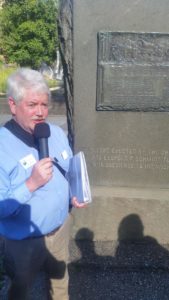
“They saw it (the park) as a great marketing idea,” says Karen Johnson, curator for the foundation, which also oversees operations of the nearby Schmidt House. She says “a lot of people had their hands in the pie” to get it built, including prominent local grocer Carl Reder, whose son Joe ran the park for many years.
The park proved a big hit. In its early years, about 400,000 people visited annually; it has since stabilized at about 250,000, Freedman said. It’s one of the top five tourist attractions in the county, Trosper adds.
The park, owned by the Foundation, was built exclusively with private money at a cost of $430,000. It still operates with no public money.
The park of that era looks much as it does now – paths meander down either side of the river, connected by two scenic bridges. Under nearby shade trees are picnic tables and a small playground. A state-run fish hatchery is located near the Upper Falls. But Trosper said the park area’s bucolic present belies its bustling past.
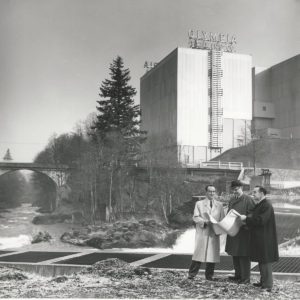
stand below the brewery reviewing plans for Tumwater Falls Park in 1962. Photo courtesy: Olympia Tumwater Foundation
“This is not how it started,” Trosper says during a fascinating River Talk he leads on Thursday nights during the summer.
Michael T. Simmons, leader of the first band of white settlers, was immediately attracted by the river’s potential: “This is going to be the place where we settle,” he said.
The name “Tumwater” is a derivation of the Indian world “tum chuck” – meaning “noisy water.” “Deschutes” is a derivation of a name given to the river by French trappers and traders, Trosper said.
Since 1845, the site has been home to a grist mill, sawmill, power plant, tannery, ice company, railroad line, flour mill and a park.
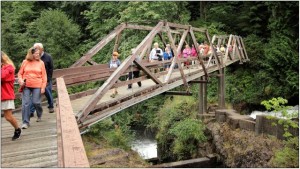
Hazard Stevens, son of the first territorial governor, opened an animal park nearby, below what is now the Falls Terrace Restaurant. Elk, swans and even a bear were among the attractions in what Freedman and Trosper describe as “an early version of Northwest Trek.” Stevens wanted an attraction for the new street trolley system he helped finance to shuttle people from Olympia to “the wilds” of Tumwater.
A natural amphitheater on the brewery side of the park, with bleacher-type seats and a footbridge across the river, was developed. Concerts, conventions and other social occasions were held there. Among the social events noted by an Olympian article in 1892:
“The grove along the right side of the Deschutes River …is being cleared and winding walks and trails installed there. It is expected that a vast amount of Olympia love-making will be done in this delightful little park, made accessible by the electric car.”
Until I-5 was built, Deschutes Parkway, parallel to the river park, was the main street of Tumwater, where businesses flourished and residents lived.
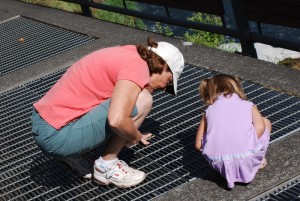
Surprisingly, what was not there when white settlers arrived were salmon. The river was not a natural salmon run. Salmon were introduced by the newcomers, who built fish ladders, some of which date to the 1890s. Watching the salmon fight their way upstream is a highlight for park visitors each fall.
Some change may be in the offing. The Falls Park and Historical Park may be connected and the salmon hatchery by the Upper Falls is scheduled to be moved. But mostly, Freedman says, the park will remain as people know and love it
“It’s not broke, so why fix it?” he said.






























